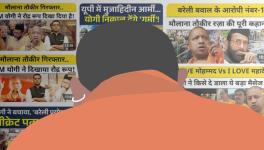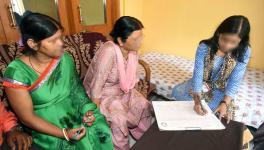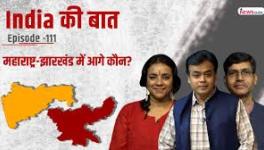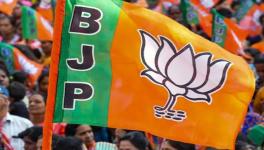The Bitter Reality behind Priyanka Gandhi’s 40% Gambit for Women Candidates
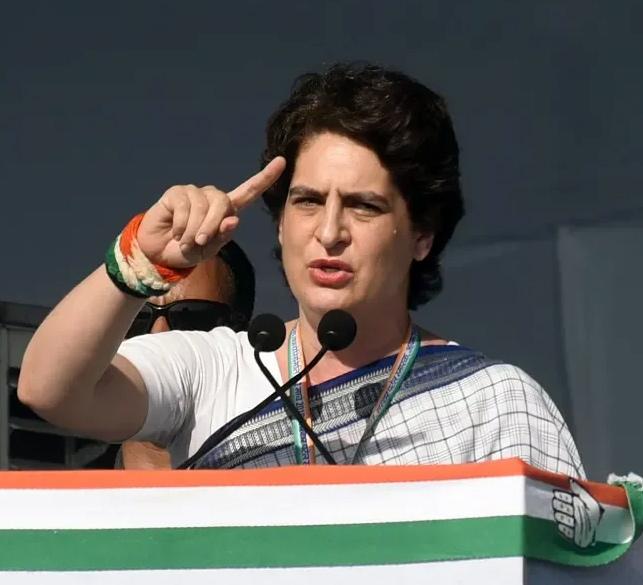
With the declaration that 40% of the Congress party’s tickets in the Uttar Pradesh Assembly election next year will be reserved for women, Priyanka Gandhi Vadra has returned the spotlight to the contentious issue of women’s rights representation in elected bodies. It sparked off fulsome praise from Congress leaders and trenchant criticism by opponents. Women’s groups and civil society leaders largely chose optimistic silence. That this is a debatable issue 25 years after the Women’s Reservation Bill was introduced in Parliament, in September 1996, is a sad comment on India’s gender-unfriendly political culture and the need to create space for women within political parties.
Vadra, general secretary of the Uttar Pradesh party unit, admitted that she would have liked to make it 50% but capped it at 40% after consultation with her party colleagues. The men and women, mostly men, around her must have propped up the usual excuses bandied about all these years. Her will did not—or could not—prevail over the tactical considerations of the Congress which contests the Uttar Pradesh Assembly election with its back to the wall, fighting for its very identity. This is realpolitik, we are told.
Such realpolitik has been a recurring hurdle in the passage of the Bill too. The “special day in the history of our country”, words with which the Bill was introduced in Parliament 25 years ago, has not yet come to be. Versions of the Bill were introduced in 1998, 1999, and 2008 but like the original one, they too lapsed. Rajya Sabha passed the Bill in 2010, but Lok Sabha needs to make it into law. The manifestos of the Congress party and Bharatiya Janata Party (BJP) in 2014 promised 33% reservation for women in Parliament and state Assemblies. Despite the brute majority of the BJP, especially after the 2019 Lok Sabha election, this has not happened.
Participation is up
Women’s representation does not appear to be high on the BJP government’s agenda. In the tsunami of issues occupying the public domain, ranging from exponential price rise and communally charged incidents to distressing unemployment and manufactured controversies over drug busts, informed and vigorous discussions on women’s representation in politics find little space. The issue has been unfortunately marginalised. Unfortunate because there has been a healthy rise in the number of women voters, more in rural areas than cities, and the number of women contestants in elections has increased, too.
The 47% turnout of women voters in the 1962 general election surged to 66% in 2014. Men’s turnout grew by only five per cent in the same period to 67%, according to “The Verdict: Decoding India’s Elections” by reputed election analysts Dr Prannoy Roy and Dorab Sopariwala. Rural—not urban—women made this possible. Women’s turnout in rural areas increased by 13% between 1971 and 2014; it was eight per cent lower than that of urban women in 1971, the authors point out. What is more, a staggering 70% of women are taking independent decisions on whom to vote for, according to a survey of the Centre for the Study of Developing Societies seven years ago. Women are, in election parlance, a clear-cut vote bank.
Other metrics show women’s increasing participation in politics. More women have been entering the electoral arena in the last few decades at the national and state levels. However, despite this, they comprise barely eight per cent of the contestants. Also, women’s representation in the highest offices, especially at the state level, remains low, with most state cabinets having less than 10% women in ministerial or decision-making roles.
Uttar Pradesh as Congress lab
Election data in 2019 showed that at 54 lakh, Uttar Pradesh had the highest increase in the number of women voters, bringing their total number to 6.61 crores. Even with these numbers, Uttar Pradesh was far behind states like Kerala, Andhra Pradesh and Goa, which had more women than men voting. But it cannot be denied that the evolving women’s vote is a political reality in Uttar Pradesh.
Priyanka Gandhi Vadra’s announcement takes cognisance of these and similar shifts in ground realities about women in politics, especially in the state. It is a clever gambit to woo the woman vote bank, a low-stake strategy by the weakest candidate to score non-electoral points. If this demonstrates her commitment to increasing women’s participation at all levels and within the Congress, too, it is welcome. But it will be tougher to pull off 40% in states where the Congress party has high stakes in an election.
For the Congress, which has only seven MLAs in the 403-member Uttar Pradesh Assembly—two of them are women—the forthcoming election is the time to make bold statements. The party had given barely ten per cent of tickets to women in the last election in 2017. However, since then, Mamata Banerjee in West Bengal and Nitish Kumar in Bihar upped the game with 40-41 per cent women candidates in their state elections. The BJP, through various central schemes, is aggressively wooing women voters.
The Congress has little to lose in the electoral tally and much to gain in terms of good optics by fielding 40% women candidates. If it replicates this in states where it holds power or the Assemblies are smaller, it would have undertaken a long-needed exercise that women’s groups have been suggesting all along. Women’s groups have been demanding that the 33% seats to women candidates be non-negotiable within political parties to potentially change the overall scenario, irrespective of the fate of the Women’s Reservation Bill.
Walking the talk
Priyanka Gandhi Vadra’s is a statement of intention. Only when a party distributes tickets will the picture on whether the Congress apparatus follows through on her announcement become clearer. And, if so, with what degree of integrity. The tendency of political parties has been to allot low-risk or less ‘winnable’ seats to women. It allows them to show better women’s participation but maintain male dominance in elected bodies and decision-making roles. If Vadra is able to break this mould to an extent, it would mean some progress.
Uttar Pradesh has witnessed horrifying crimes against women, especially women of Scheduled Caste, Scheduled Tribes and minorities. The numbers showed a dip last year, but it would be a stretch of the imagination to suggest that Yogi Adityanath’s government has made the state safer for its women. In fact, the Chief Minister’s anti-women statements such as “women are not capable of being left free or independent…their energy should be regulated lest it becomes worthless and destructive” are telling. The RSS chief Mohan Bhagwat, a bachelor, periodically hands out advice on how to be a good wife and so on.
If the Congress party walks Vadra’s talk, it would have created space for Uttar Pradesh women to participate at the front-lines of a political battle. Irrespective of electoral outcomes, this can potentially change conversations given that women have traditionally focussed on life-impacting issues such as education and water supply. It is quite likely that the BJP, too, will field more women this time though its women contestants subsume gender concerns into their religious or caste agendas.
There is a subtle but important shift that has already happened. In the BJP’s and Prime Minister Narendra Modi’s world-view, women appear as recipients or beneficiaries of social programmes and political decisions. Vadra has sought to change the frame itself—from women as beneficiaries to active participants in the political process. The long-term impact of this shift cannot be underestimated. Should she decide to contest, she would have upped the ante for the Congress and women in Uttar Pradesh. And if the party adopts the 40% rule across states, its impact will be felt on the polity, no matter what happens with the Women’s Reservation Bill.
The author, a senior Mumbai-based journalist and columnist, writes on politics, cities, media and gender. The views are personal.
Get the latest reports & analysis with people's perspective on Protests, movements & deep analytical videos, discussions of the current affairs in your Telegram app. Subscribe to NewsClick's Telegram channel & get Real-Time updates on stories, as they get published on our website.









